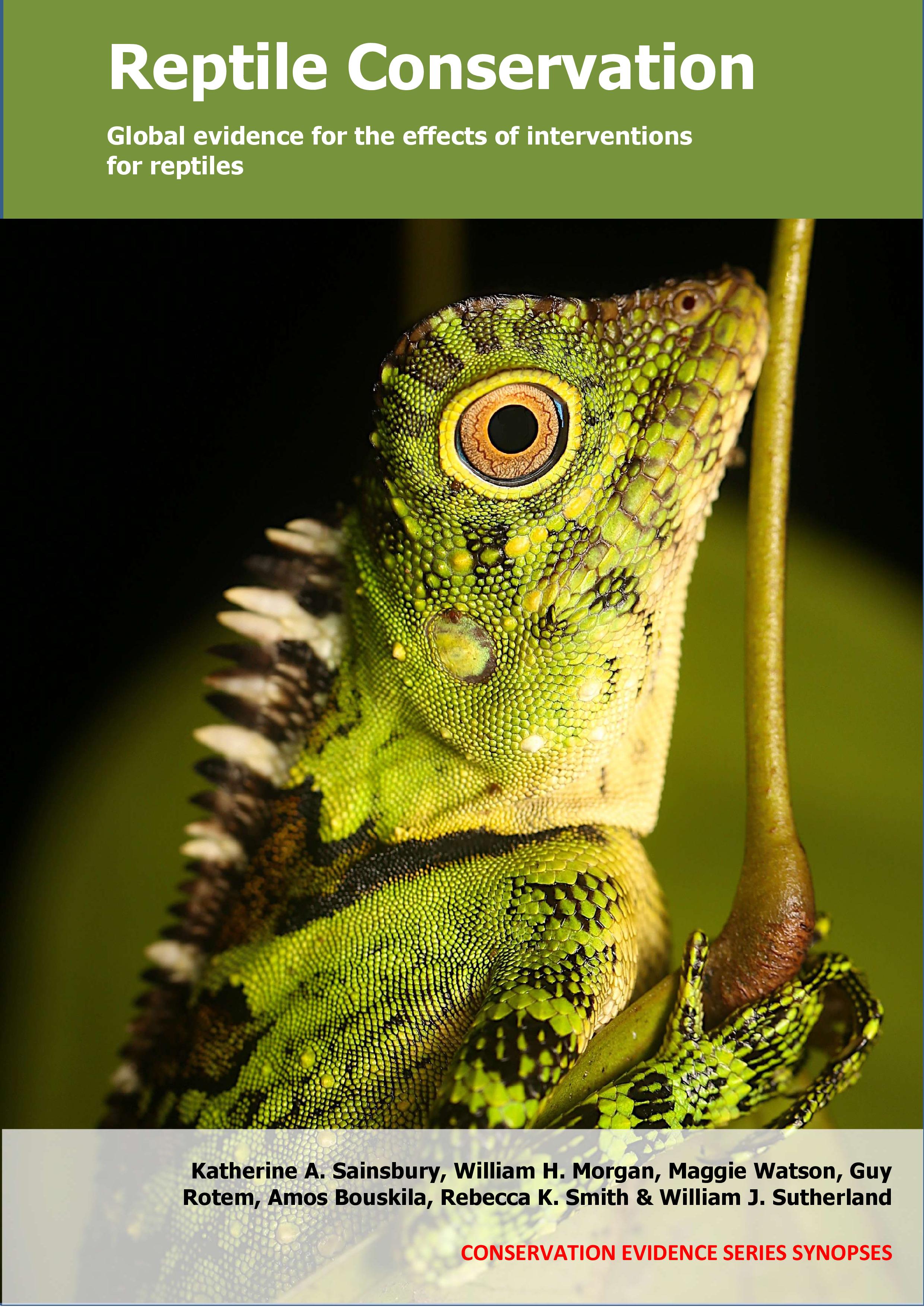Actions to conserve biodiversity
We have summarised evidence from the scientific literature about the effects of actions to conserve wildlife and ecosystems.
Review the evidence from the studies
Not sure what Actions are? Read a brief description.
Search for evidence
e.g. "frogs chytrid"
312 Actions found
Refine
Hide
312 Actions found
Download Actions
| 0 selected |
|
Order results by:
| Action | Effectiveness | Studies | Category | |
|---|---|---|---|---|
|
Introduce legislation to control the use of hazardous substances Action Link |
No evidence found (no assessment) | 0 |
|
|
|
Use ‘bioremediating’ organisms to remove or neutralize pollutants Action Link |
No evidence found (no assessment) | 0 |
|
|
|
Add chemicals or minerals to sediment to remove or neutralize pollutants Action Link |
No evidence found (no assessment) | 0 |
|
|
|
Limit, cease or prohibit dumping of garbage and other solid waste Action Link |
No evidence found (no assessment) | 0 |
|
|
|
Remove garbage and other solid waste from terrestrial, aquatic and coastal environments Action Link |
Awaiting assessment | 1 |
|
|
|
Use biodegradable materials to construct fishing gear to prevent entanglement of reptiles in lost or abandoned gear Action Link |
No evidence found (no assessment) | 0 |
|
|
|
Prevent the loss and discard of fishing gear and related debris Action Link |
No evidence found (no assessment) | 0 |
|
|
|
Recover lost or discarded fishing gear Action Link |
No evidence found (no assessment) | 0 |
|
|
|
Remove derelict fishing gear from reptiles found entangled Action Link |
No evidence found (no assessment) | 0 |
|
|
|
Improve treatment standards of sewage and wastewater Action Link |
No evidence found (no assessment) | 0 |
|
|
|
Create walls or barriers to exclude pollutants Action Link |
No evidence found (no assessment) | 0 |
|
|
|
Use non-offset hooks Action Link |
Awaiting assessment | 2 |
|
|
|
Cease or prohibit discharge of waste effluents overboard from vessels Action Link |
No evidence found (no assessment) | 0 |
|
|
|
Establish emergency plans for oil spills Action Link |
No evidence found (no assessment) | 0 |
|
|
|
Contain or recover oil following spills Action Link |
No evidence found (no assessment) | 0 |
|
|
|
Rehabilitate reptiles following oil spills Action Link |
Awaiting assessment | 1 |
|
|
|
Use non-ringed hooks Action Link |
Awaiting assessment | 1 |
|
|
|
Relocate reptiles (including eggs and hatchlings) following oil spills Action Link |
Evidence not assessed | 0 |
|
|
|
Use larger hooks Action Link |
Awaiting assessment | 2 |
|
|
|
Regulate planning permission for gas/filling stations at reptile sites Action Link |
No evidence found (no assessment) | 0 |
|
|
|
Modify number of hooks between floats on longlines Action Link |
Awaiting assessment | 1 |
|
|
|
Introduce and enforce water quality regulations for aquaculture systems Action Link |
No evidence found (no assessment) | 0 |
|
|
|
Use catch and hook protection devices Action Link |
No evidence found (no assessment) | 0 |
|
|
|
Switch to land-based aquaculture systems Action Link |
No evidence found (no assessment) | 0 |
|
|
|
Install exclusion devices on fishing gear: Sea turtles Action Link |
Awaiting assessment | 3 |
|
Download Actions
| 0 selected |
|

Reptile Conservation - Published 2021
Reptile synopsis
Watch this search
If you are familiar with RSS feeds, please click the button below to retrieve the feed URL:
RSS feed for this searchIf you are unfamiliar with RSS feeds, we would suggest reading this BBC article.
Unfortunately, due to the number of feeds we have available, we cannot provide e-mail updates. However, you could use tools such as Feed My Inbox to do this for you.
What are 'Individual studies' and 'Actions'?
Individual studies
An individual study is a summary of a specific scientific study, usually taken from a scientific journal, but also from other resources such as reports. It tells you the background context, the action(s) taken and their consequences.
If you want more detail please look at the original reference.
Actions
Each action page focuses on a particular action you could take to benefit wildlife or ecosystems.
It contains brief (150-200 word) descriptions of relevant studies (context, action(s) taken and their consequences) and one or more key messages.
Key messages show the extent and main conclusions of the available evidence. Using links within key messages, you can look at the paragraphs describing each study to get more detail. Each paragraph allows you to assess the quality of the evidence and how relevant it is to your situation.
Where we found no evidence, we have been unable to assess whether or not an intervention is effective or has any harmful impacts.





)_2023.JPG)














